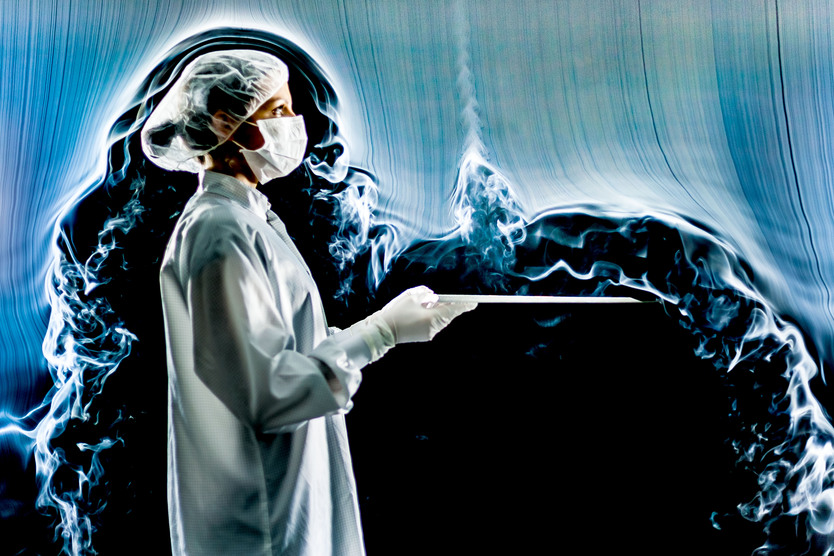
Vizualisation of the air circulation in the clean room
© HRI
In sectors such as the semiconductor, pharmaceutical and food industries, so-called “clean rooms” ensure that impurities in the air do not compromise the respective product. To keep the rooms clean, heating, ventialtion and air conditioning systems systems are used that enable a high air change rate. This was precisely the focus of a research project conducted by the Hermann-Rietschel Institute (HRI) of the Technical University of Berlin and funded by the Federal Ministry for Economic Affairs and Energy (BMWi) as part of the Federal Government’s 6th Energy Research Programme. The aim was to reduce the high energy consumption involved in ventilating such rooms by gaining a better understanding of the flow behaviour of contaminating particles and how they spread.
In two clean rooms, the researchers examined two types of ventilation system: the widespread turbulent flow and the low-turbulence laminar flow systems. The latter system enables air change rates of up to 600 h-1 and is used when cleanliness requirements are particularly stringent. The researchers identified energy-saving potential for both technologies. In one case, this is achieved by an ideal positioning of the supply and exhaust air diffusors, which enables a better dilution of the room air. In the second case, adjusting the inflowing air volume to the obstacles in the room was identified as the decisive energy-saving criterion. In the case of laminar flow, fan power can be reduced by about 70 per cent in this way.
In addition to further findings, which can be viewed in detail in the final report, the researchers’ analyses also showed that the floor panels, for instance, influence the airflow in the room: the bigger their perforation, the bigger the cross-drift that moves the contaminants.
In a follow-up project also funded by the BMWi dealing with “Energy-efficient ventilation in multi-functional operating rooms” (scheduled to continue until February 2020), the team of researchers is addressing similar questions related to the origin and spreading of germs.


